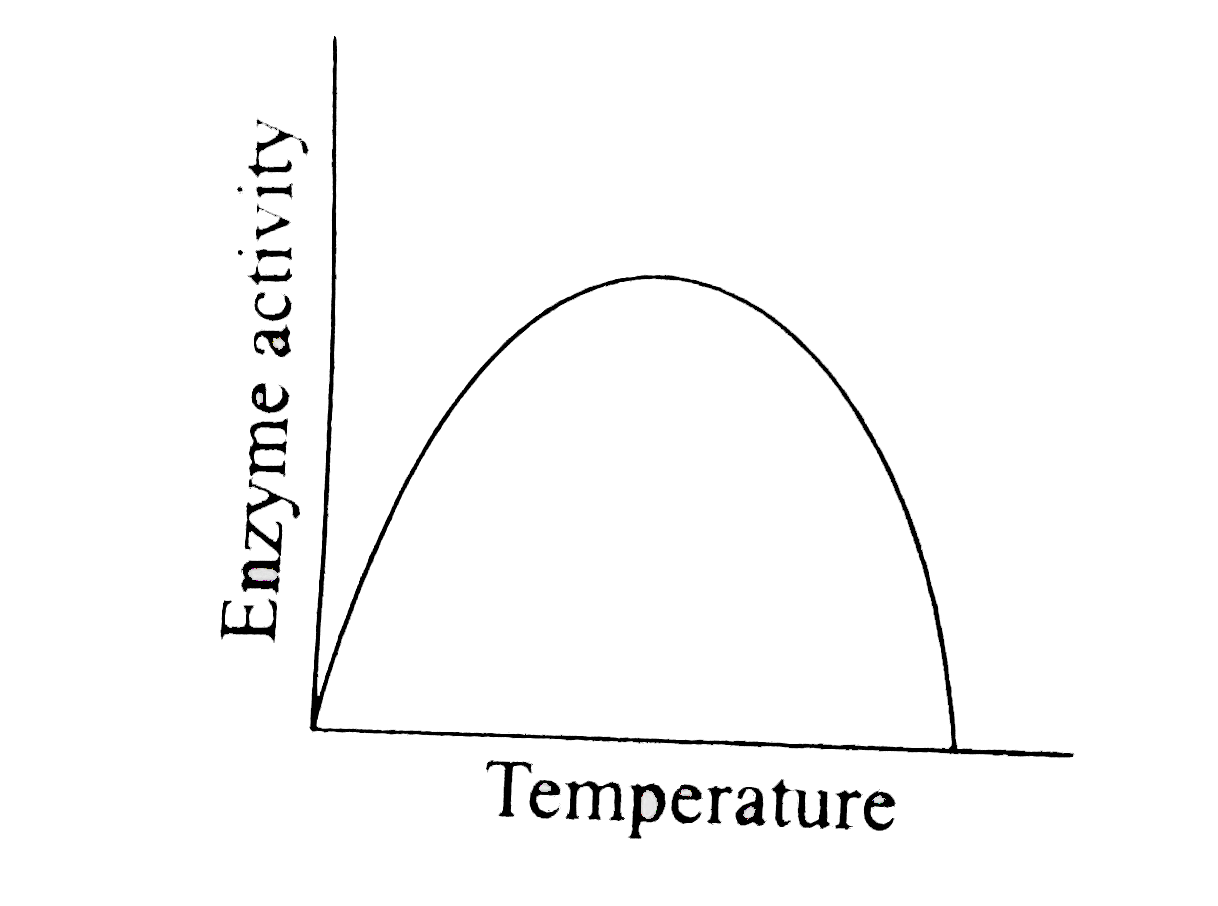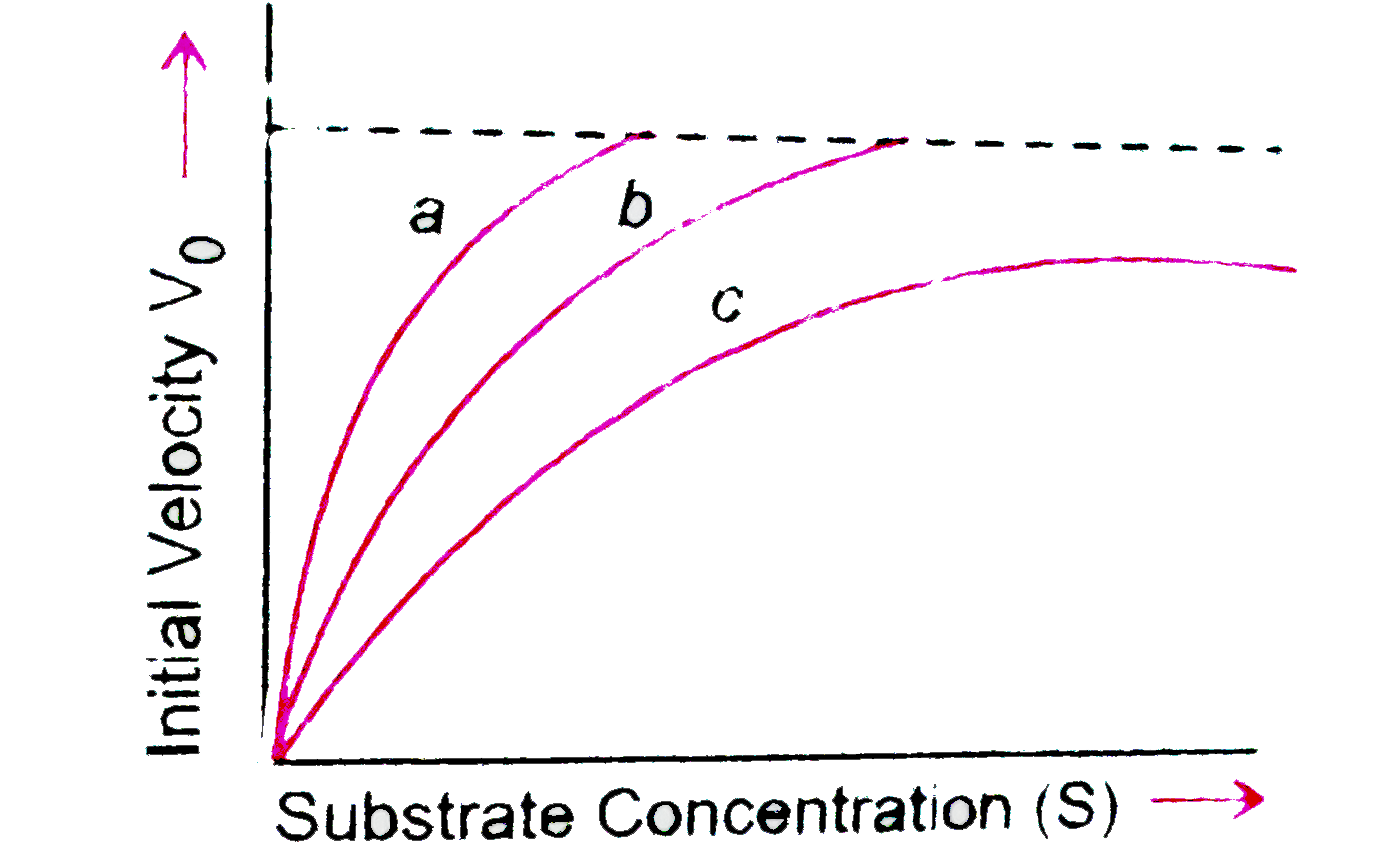The curve given below show enzymatic activity with relation to three conditions (pH, temperature and substrate concentration)

What do the two axises (x and y) represent
The correct Answer is:D
(D) 
Topper's Solved these Questions
- BOOK - A2ZCHAPTER - BIOMOLECULESEXERCISE - Section -c Previous Years Examination Questions (aiims Question)20videos
BIOMOLECULES
- BOOK - A2ZCHAPTER - BIOMOLECULESEXERCISE - Section -c Previous Years Examination Questions (assertion And Reason Type Questions)8videos
BIOMOLECULES
- BOOK - A2ZCHAPTER - BIOMOLECULESEXERCISE - Section -b Assertion And Reason Question11videos
BIOMOLECULES
- BOOK - A2ZCHAPTER - BIOLOGICAL CLASSIFICATIONEXERCISE - Mock Test Assertion - Reasoning Question5videos
BIOLOGICAL CLASSIFICATION
- BOOK - A2ZCHAPTER - BODY FLUIDS AND CIRCULATION EXERCISE - Section D: Chapter-end Test50videos
BODY FLUIDS AND CIRCULATION
Similar Questions
The curve given below shows enzymatic activity with relation to three conditions (pH, temperature and substrate concentration). What does the two axis (x and y) represent ?
 View Solution
View SolutionThe graph given below represents the organisms reponse to temperature as an environmental conditions :

(i) Which one of the two lines represents conformers and why ?
(ii) What does the other line in the graph represent and why ?
(b) Mention the different adaptations the parasites have evolved with , to be able to successfuly complete their life cycle in their hosts.View Solution
Knowledge Check
- Question 1 - Select One
The curve given below shows enzymatic activity with relation to three conditions (pH, temperature and substrate concentration). What does the two axis (x and y) represent ?
 AX-axis: Enzymatic activity, Y-axis: pHBX-axis: Temperature, Y-axis: Enzyme activityCX-axis: Substrate concentration, Y-axis: Enzymatic activityDX-axis: Enzymatic activity, Y-axis: Temperature
AX-axis: Enzymatic activity, Y-axis: pHBX-axis: Temperature, Y-axis: Enzyme activityCX-axis: Substrate concentration, Y-axis: Enzymatic activityDX-axis: Enzymatic activity, Y-axis: Temperature - Question 2 - Select One
the curve given below shows wnzymatic acitvity with relation to three conditions (pH , temperature and substrate concentration ).

what do the two axes ( x and y) represent ?AEnzymatic acticity , temperatureBEnzymatic activity ,pHCTemperature enzye activityDSubstrate concentration enzymatic activity - Question 3 - Select One
The curve given show enzymatic activity with relation to three conditions (pH, temp: and substrate conc.). What do the two axises (x and y) represent?
 Ax-axis - Enzymatic activity, y-axis - pHBx-axis - Temperature, y-axis - Enzyme activityCx-axis - Substrate conc., y-axis - Enzymatic activityDx-axis - enzymatic activity, y-axis - temperature
Ax-axis - Enzymatic activity, y-axis - pHBx-axis - Temperature, y-axis - Enzyme activityCx-axis - Substrate conc., y-axis - Enzymatic activityDx-axis - enzymatic activity, y-axis - temperature
The Given figure shows three velocity-substrate concentration curves of an enzyme reaction. What do the curves X Y and Z depict respectively ?
 View Solution
View Solution(a) The graph given below represents the organisms response to temperature as an environmental condition.
(i) Which one of the two lines represents conformers and why ?
(ii) What does the other line in the graph represent and why ?
(b) Mention the different adaptations the parasites have evolved with, to be able to successfully complete their life cycles in their hosts.
 View Solution
View SolutionThe given figure shows three velocity-substrate concentration curves for an enzyme reaction. What do the curves x, y and z depict respectively?
 View Solution
View SolutionFigure given below shows three velocity-substrate concentration curves for an enzyme reaxtion. What do the curves for an enzyme reaction. What do the curves depict
 View Solution
View SolutionThe rate law expresses the relationship of the rate of a reaction to the rate constant and the concentration of the reactants raised to some powers for the general reaction.
aA+bB→cC+dD
Rate law takes the form
r=k[A]x[B]y
where x and y are number that must be determined experimentely k is the rate constant and [A] and [B] are concentration of A & B respectively.
The varitation of concentration of 'A' with time in two experiments starting with two different initial concentration of 'A' is given by the following graph.The reaction is represented by A(aq)→B(aq) what is rate of reaction (M/min) when conc. of A in aqueous solution was 1.8 M:
 View Solution
View Solution

